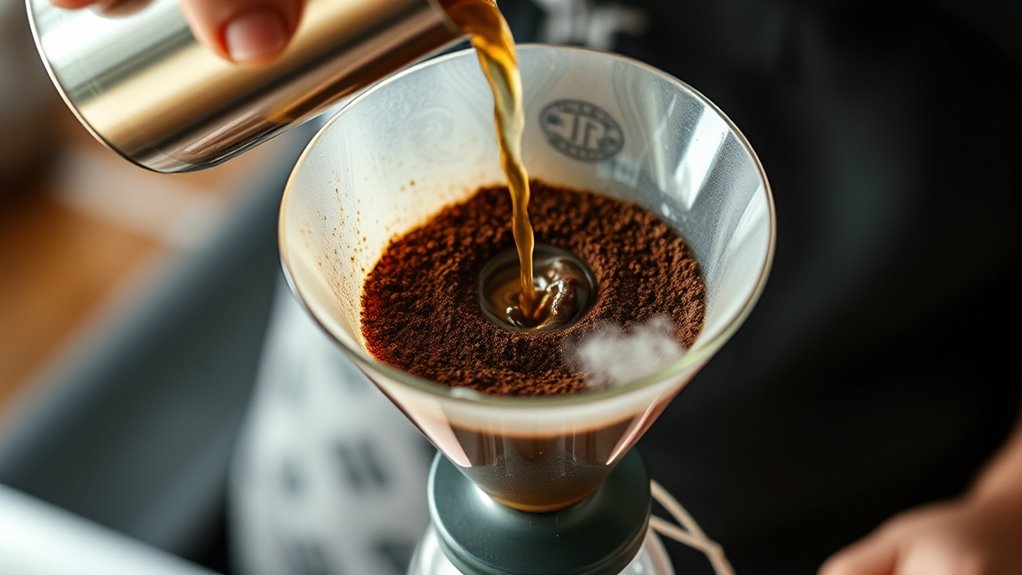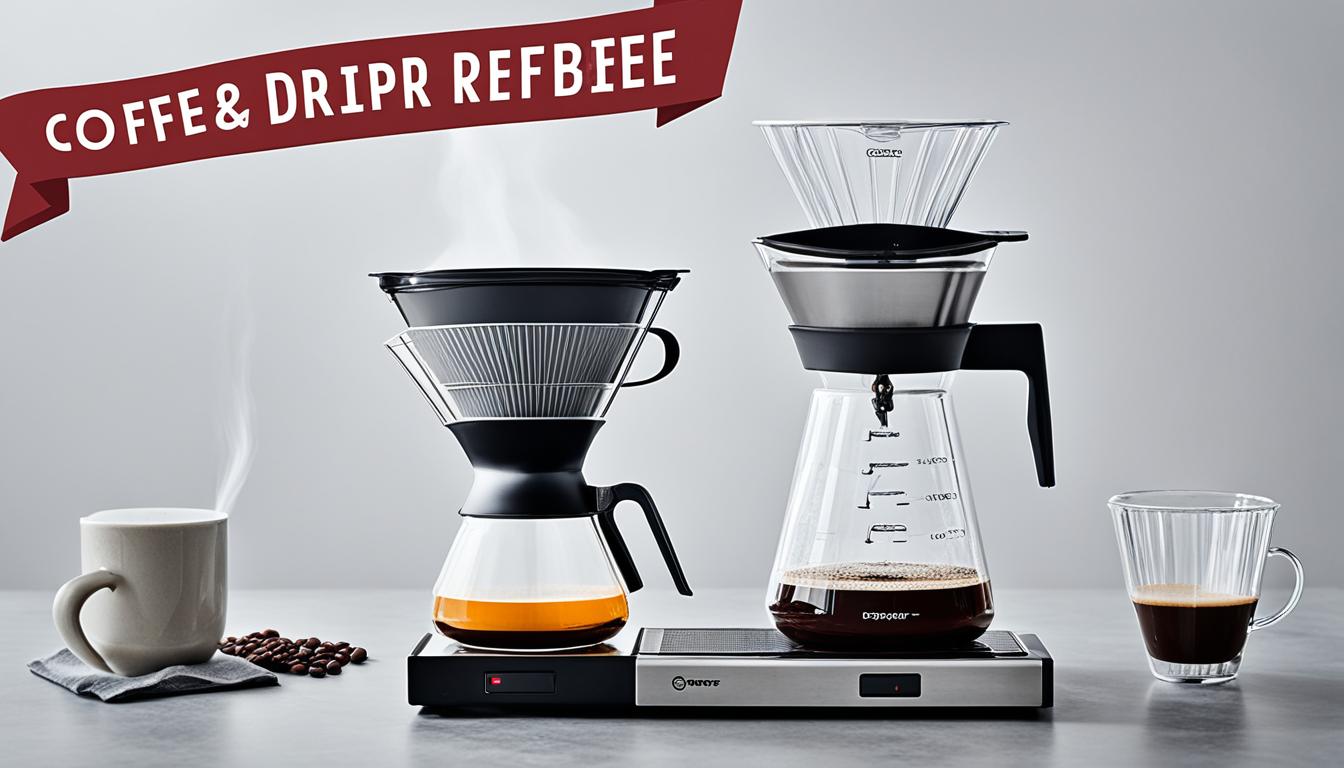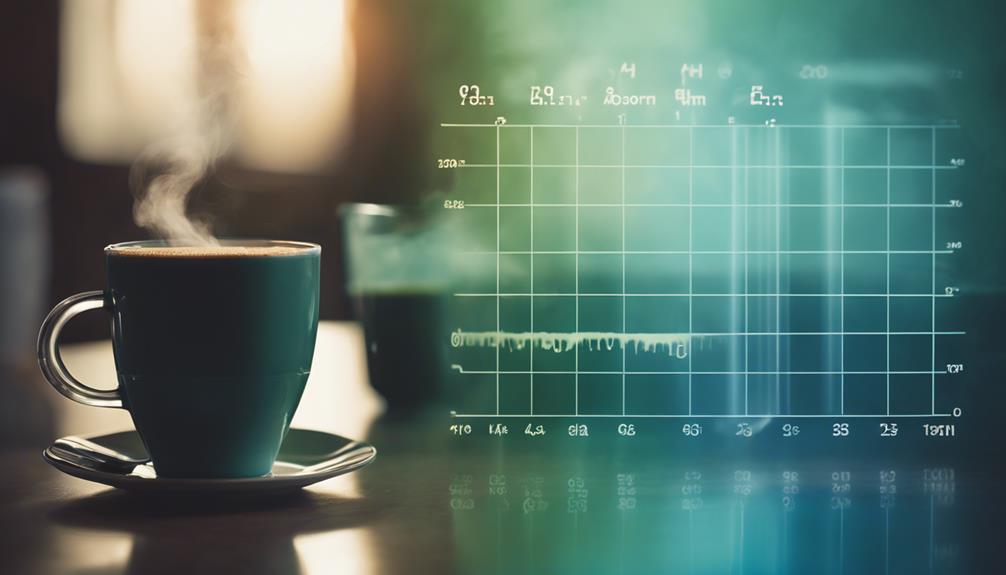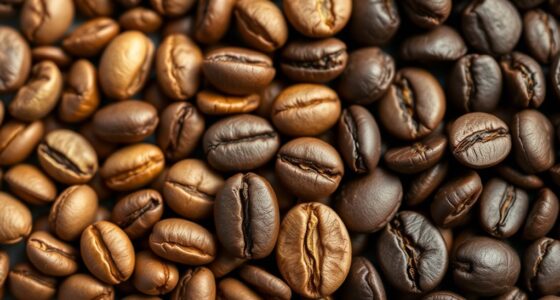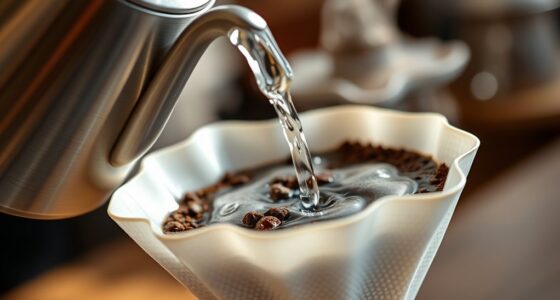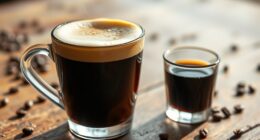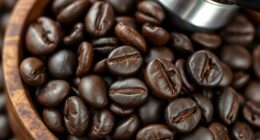The science of coffee extraction involves water dissolving flavors, acids, and oils from coffee grounds, influenced by grind size, brew time, and temperature. Finer grinds increase surface area for faster extraction, while longer brew times and higher temperatures enhance solubility but can risk over-extraction. Properly balancing these variables guarantees your coffee tastes rich and smooth. If you stick around, you’ll discover how understanding these principles helps you craft the perfect cup every time.
Key Takeaways
- Coffee extraction involves dissolving soluble compounds from grounds into water, influenced by solubility, grind size, time, and temperature.
- Finer grind increases surface area, speeding up extraction, while coarser grind slows it down, affecting flavor balance.
- Brew time controls how much flavor is extracted; too long causes bitterness, too short results in sourness.
- Water temperature affects solubility and diffusion rates; optimal range is around 195-205°F for balanced extraction.
- Physical principles like mass transfer and diffusion govern the movement of flavor compounds during brewing, shaping the final taste.
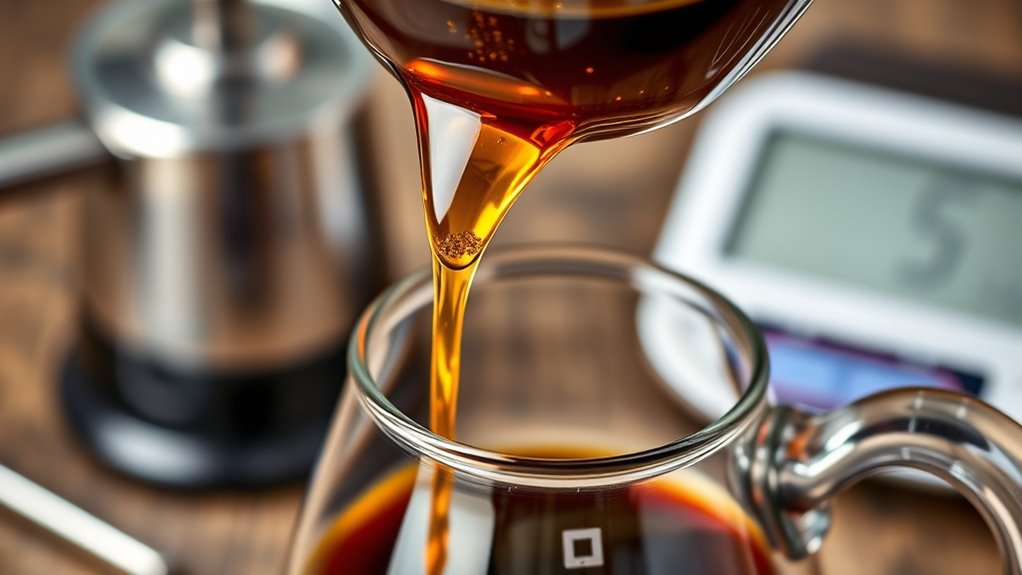
Coffee extraction is the science behind how water dissolves soluble compounds like acids, sugars, and oils from coffee grounds to create your brew. The process depends heavily on solubility—the ability of these compounds to dissolve into water—which is influenced by factors such as grind size, brew time, and water temperature.
Coffee extraction involves water dissolving acids, sugars, and oils from grounds, shaped by solubility, grind size, brew time, and temperature.
When you brew coffee, these variables work together to control how quickly and thoroughly flavor compounds are released, shaping the taste of your final cup.
Your grind size plays a crucial role in coffee extraction. A finer grind increases the surface area, promoting faster mass transfer and diffusion of soluble compounds into water. Conversely, a coarser grind slows down extraction, which can lead to under-extraction, resulting in sour or weak flavors.
Finding the right grind size for your brew method ensures that the extraction progresses at an optimal rate, avoiding both under- and over-extraction.
Brew time is another vital factor. Longer contact between water and grounds allows more compounds to dissolve, but overdoing it risks extracting undesirable, slow-extracting compounds that cause bitterness.
Shorter brew times may not extract enough of the desirable flavor compounds, leaving your coffee tasting sour or flat. Striking a balance is key to achieving optimal extraction, typically between 19-23%, where the right proportion of acids, sugars, and oils are dissolved without bitterness or sourness dominating.
Water temperature influences solubility and the rate of diffusion of flavor compounds. Higher temperatures generally increase solubility and diffusion rates, extracting richer flavors more efficiently.
However, excessively hot water can lead to over-extraction, while cooler water may result in under-extraction, producing weak or sour coffee. Most brewing methods recommend water temperatures around 195-205°F (90-96°C) to optimize extraction without unwanted side effects.
The physical principles underlying coffee extraction involve mass transfer, diffusion, and solubility. These processes dictate how flavor compounds move from the coffee grounds into the water.
Different brew methods manipulate these principles differently—French press, drip, espresso—each with unique dynamics affecting extraction. Mathematical models help predict and optimize this process, ensuring you achieve the desired flavor profile.
Frequently Asked Questions
What Is the Science Behind Coffee Extraction?
You want to understand how coffee extraction works. When you brew coffee, hot water acts as a solvent, dissolving flavors, acids, and oils from the grounds.
The process depends on factors like grind size, water temperature, and brew time. As extraction progresses, different compounds are released at different rates, shaping the flavor.
Proper control of these variables guarantees you get a balanced, flavorful cup every time.
What Is the 80/20 Rule for Coffee?
The 80/20 rule for coffee means that about 20% of the soluble compounds in your coffee provide 80% of its flavor.
You want to aim for an extraction yield of roughly 18-22% to get a balanced, flavorful cup without bitterness.
Focusing on controlling variables like grind size and brew time helps you extract those key compounds efficiently, giving you a great-tasting coffee with minimal effort.
What Is the Process of Coffee Extraction?
You extract coffee by hot water passing through the grounds, dissolving soluble compounds like acids, sugars, oils, and flavors.
As water moves through, it first pulls out fats and acids, then sugars, and finally plant fibers.
Your brew’s flavor depends on factors like temperature, grind size, and brew time, which control how much is extracted.
Proper extraction balances flavor and prevents under- or over-extraction.
How to Get Perfect Coffee Extraction?
To get perfect coffee extraction, start by maintaining water temperature between 195°F and 205°F to balance solubility.
Use a consistent grind size suited to your brewing method, and adjust the coffee-to-water ratio for the desired strength.
Guarantee even tamping and agitation during brewing to promote uniform extraction.
Finally, monitor your extraction yield, aiming for 19-23%, to achieve balanced flavor without bitterness or sourness.
Conclusion
Understanding the science behind coffee extraction helps you craft a perfect cup every time. By controlling factors like grind size, water temperature, and brew time, you can optimize flavor and strength. Remember, experimenting with these variables lets you tailor your coffee to your taste. So, get hands-on, observe how different techniques affect your brew, and enjoy the journey of mastering coffee extraction. Ultimately, your perfect cup is within reach—just keep refining your process.
